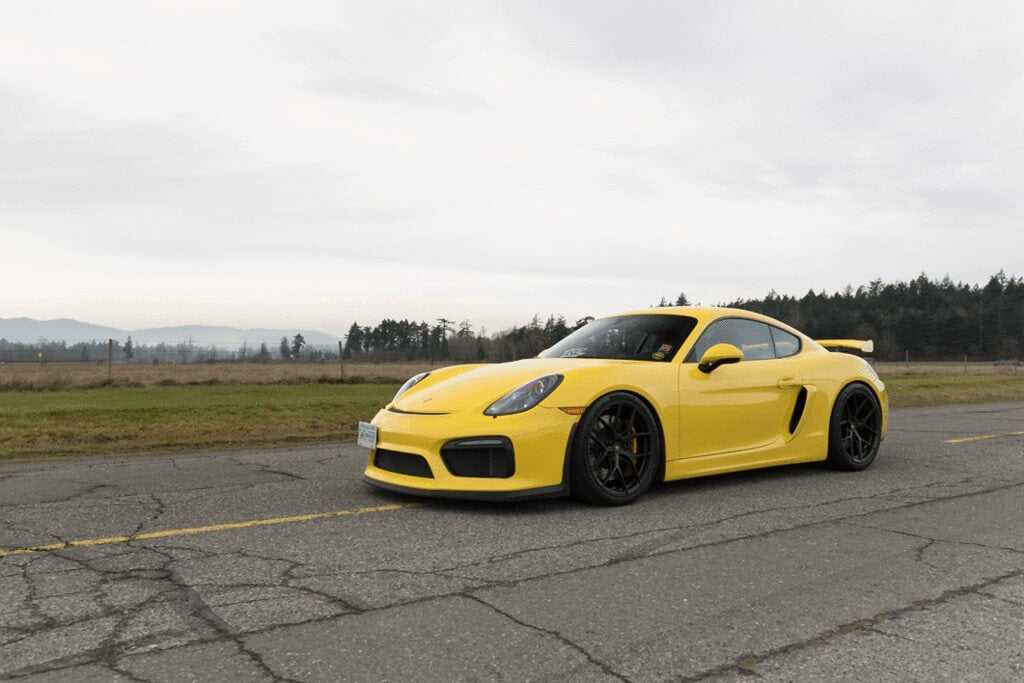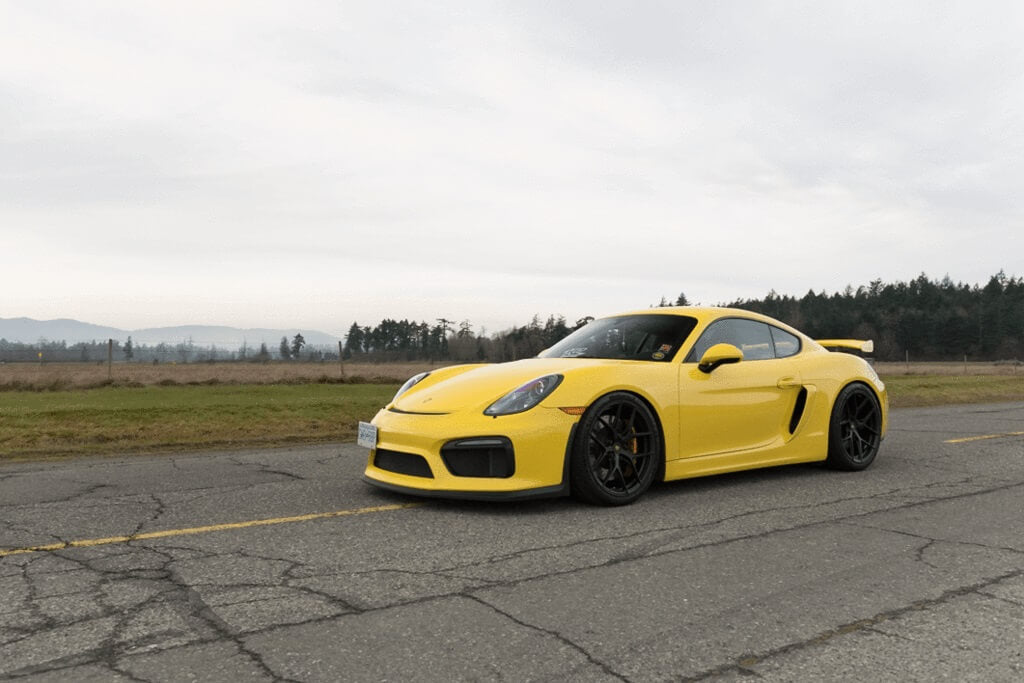Have you ever wondered how car photos that you see in advertisements and magazines look so sleek and flawless? It’s not just the car itself that contributes to their stunning appearance, but also the process of edit raw car photos.
With the right skills and techniques, talented editors can transform a basic, Raw Car Photos into a captivating masterpiece that showcases the car’s beauty in the most appealing way.
Raw car photos provide a blank canvas for editors to work their magic. By adjusting the exposure, color balance, and sharpness, they can enhance the details and make the car’s features pop.
In addition to these basic edits, editors use their creativity to remove distractions, add dynamic effects, and create the perfect composition that highlights the car’s unique design.
With the rise of social media and online car sales, the demand for professionally edited car photos is higher than ever, as buyers want to see the vehicle in its best light before making a purchase decision.
Looking to enhance your car photos? Raw images are the best starting point for editing. With their high level of detail and flexibility, you can transform the look of your car photos. Adjust the exposure, color, and sharpness to make your car stand out. Unlock the potential of your raw car photos with professional editing software like Adobe Lightroom or Capture One. Start editing today and watch your car photos come to life!

Table of Contents
ToggleUnleashing the Power of Raw Editing in Car Photography
When it comes to capturing the beauty and detail of automobiles, raw photography is a game-changer. Raw image files contain all the data recorded by the camera’s image sensor, providing photographers with greater flexibility and control during the editing process.
In the world of car photography, where every detail matters, editing raw photos can make a significant difference in enhancing colors, adjusting exposure, and bringing out the true essence of the vehicle.
In this article, we will explore the wonderful world of car photos to edit raw. Whether you’re a professional car photographer or an enthusiast looking to take your car photography skills to the next level, understanding the power of raw editing is essential.
We will delve into the process of editing raw car photos, the benefits it offers, and some tips and tricks to create stunning images that truly stand out.
Why Edit Raw Car Photos?
Before we dive into the specifics of editing raw car photos, let’s discuss why editing in raw format is highly recommended for car photography. Raw files contain uncompressed and unprocessed data directly from the camera sensor, providing a wealth of information and allowing for more extensive adjustments compared to editing in a compressed format such as JPEG.
When it comes to car photography, capturing the accurate colors and details of the vehicle is crucial. Raw editing allows photographers to make precise adjustments to the exposure, white balance, contrast, and other parameters without sacrificing image quality. It also provides greater control over the tonal range, allowing for effective shadow and highlight recovery.
Editing raw car photos also offers the advantage of non-destructive editing. Since raw files preserve all the original data, any changes made during the editing process can be easily reversed or modified. This flexibility is especially valuable when working on complex car images with multiple elements and intricate details.
The Process of Editing Raw Car Photos
Now that we understand the importance of editing raw car photos, let’s delve into the step-by-step process:
Importing Raw Files into Editing Software
The first step is to import your raw car photos into editing software such as Adobe Lightroom, Capture One, or ON1 Photo RAW. These tools provide a wide range of editing capabilities specifically designed for raw files, making them ideal choices for professional car photographers.
Once imported, you can organize your photos and select the ones you want to work on. It’s always a good idea to create a backup of your raw files before proceeding with any editing to ensure the safety of your original captures.
Adjusting White Balance and Exposure
The next step is to fine-tune the white balance and exposure of your car photos. White balance determines the color temperature of the image, while exposure controls the overall brightness.
Use the appropriate tools in your editing software to adjust these parameters until you achieve the desired look. Keep in mind that car photography often requires accurate color representation, so pay close attention to the white balance settings.
Enhancing Colors and Contrast
Once you’ve corrected the white balance and exposure, it’s time to enhance the colors and contrast of your car photos. Raw editing software provides various tools to adjust saturation, vibrance, and contrast.
Experiment with these settings to bring out the vividness and richness of the car’s paintwork. Be mindful not to overdo the adjustments, as it can result in an unnatural appearance.
Removing Unwanted Elements
In car photography, there may be occasions when you need to remove unwanted elements from the frame. These can include reflections, dust spots, or distractions in the background.
Use the spot healing or clone stamp tool in your editing software to seamlessly remove these elements while maintaining the overall integrity of the image. Take care to ensure that the edited areas blend in naturally with the surroundings.
Sharpening and Noise Reduction
To enhance the sharpness and clarity of your car photos, apply appropriate sharpening techniques in your editing software. Pay attention to the details and adjust the sharpening settings to bring out the intricate features of the vehicle.
Additionally, car photography sometimes involves shooting at high ISO settings, which can introduce noise into the image. Utilize the noise reduction tools in your editing software to minimize noise while preserving important details and textures.
Tips for Editing Raw Car Photos
Editing raw car photos requires attention to detail and an understanding of the specific requirements of car photography. Here are some tips to help you achieve the best results:
Shoot in Raw + JPEG
Although editing raw files offers the most control, it can be time-consuming. To streamline your workflow, consider shooting in Raw + JPEG mode. This allows you to quickly preview and select images for editing while still having the option to process raw files for more advanced adjustments.
Capture Multiple Exposures
Car photography often involves challenging lighting conditions. To preserve details in both the highlights and shadows, consider capturing multiple exposures and merging them using HDR (High Dynamic Range) techniques during the editing process.
Experiment with Different Looks
Don’t be afraid to experiment with different editing styles and looks to add a unique touch to your car photos. Play around with color grading, black and white conversions, and special effects to create images that stand out.
Learn from Others
Take inspiration from other car photographers and study their editing techniques. Join photography communities and forums to learn from experienced photographers and gain valuable insights that can elevate your editing skills.
Unleash the Full Potential of Your Car Photos with Raw Editing
Editing car photos in raw format opens up a whole new world of possibilities to enhance the visual appeal and bring out the true essence of the vehicles. With the ability to make precise adjustments to exposure, white balance, colors, and more, raw editing empowers car photographers to create stunning images that leave a lasting impression.
Key Takeaways: Car Photos to Edit Raw
- Raw car photos are unprocessed images straight from the camera.
- Editing raw car photos allows you to enhance colors, adjust exposure, and fine-tune details.
- Popular editing software like Adobe Lightroom and Photoshop can be used to edit raw car photos.
- Experiment with different editing techniques to create unique and eye-catching car images.
- Remember to save a copy of the original raw file to maintain flexibility in editing.
Frequently Asked Questions
Are you looking for car photos to edit in raw format? Check out our answers to some commonly asked questions below.
How can I find car photos to edit in raw format?
Finding car photos in raw format for editing can be done through various channels. One option is to search for car photography websites or online communities that offer raw files for download. You can also reach out to professional photographers or stock photo agencies to inquire about their raw photo offerings. Additionally, consider joining photography forums or social media groups where photographers share their work, as they may be willing to provide raw files for editing practice.
Remember to respect the copyright and usage terms of any raw photos you find, and always credit the original photographer if you share your edited versions publicly.
Why should I edit car photos in raw format?
Editing car photos in raw format allows for greater flexibility and control over the final image. Raw files preserve all the details and information captured by the camera sensor, giving you more latitude when it comes to adjusting exposure, white balance, shadows, and highlights. Moreover, working with raw files helps you maintain the highest image quality throughout the editing process, ensuring professional-looking results.
By editing car photos in raw format, you can bring out the full potential of the image and achieve the desired look and style.
What software do I need to edit car photos in raw format?
To edit car photos in raw format, you will need software that supports raw file processing. Some popular options include Adobe Lightroom, Capture One, and DxO PhotoLab. These programs offer advanced editing capabilities specifically designed for raw files and allow you to make precise adjustments to various aspects of the image.
It’s worth noting that most professional photo editing software requires a subscription or one-time purchase.
What are some tips for editing car photos in raw format?
When editing car photos in raw format, start by adjusting the basic settings such as exposure, white balance, and contrast. Fine-tune the colors to achieve the desired look, and consider enhancing the details using clarity or sharpening tools. Pay attention to the highlights and shadows, ensuring a balanced overall exposure.
Experiment with different editing styles and techniques to find your own unique aesthetic. Don’t be afraid to step outside the box and try new things.
Can I edit car photos in raw format on my smartphone?
Yes, there are mobile apps available that support editing car photos in raw format. Adobe Lightroom Mobile, Snapseed, and VSCO are popular options that offer powerful editing tools for raw files on smartphones. These apps allow you to make adjustments to exposure, color, and other image parameters directly from your mobile device.
However, keep in mind that the processing power and screen size of smartphones may limit the extent of editing capabilities compared to desktop software.
How to Edit Car Photos in Photoshop Like a Pro!
Editing raw car photos can be a fun and creative way to improve your photography skills. With a few simple edits, you can enhance the colors, adjust the lighting, and bring out the best in your car photos.
Whether you want to capture the sleekness of a sports car or the ruggedness of an off-road vehicle, editing raw car photos allows you to transform ordinary shots into stunning images.
By adjusting the contrast, saturation, and exposure levels, you can make the colors pop and the details shine. Don’t be afraid to experiment with different editing techniques and styles to create a unique look that suits your personal taste.
Remember, editing raw car photos is all about bringing your vision to life and showcasing the beauty of these incredible machines. So grab your camera, take some raw car photos, and let your creativity shine through the editing process!










